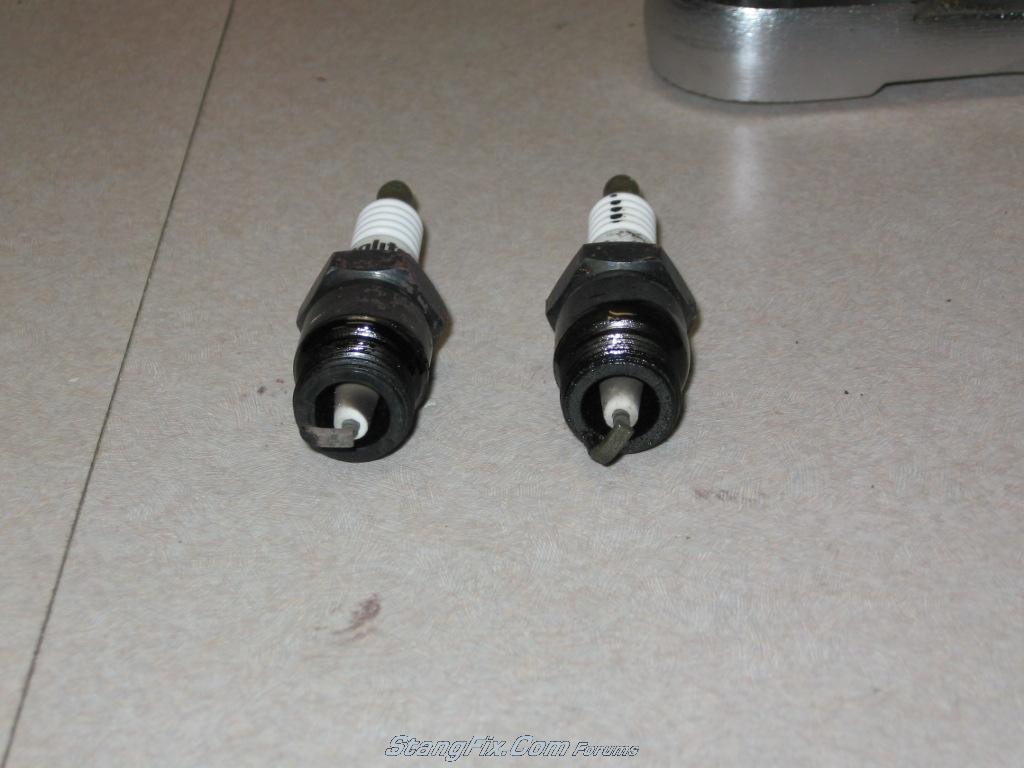Sacbill
Hard Swinger
Was working on setting up the timing and Air/Fuel mix on a buddy's car today and had some interesting results I wanted to run by those more knowledgable on SF. Drivetrain in question is a 69 351W, Summit 750 4V carb, Duraspark ignition, and Hooker Comp headers. All the internals are stock for an original 2V 351W. Automatic Trans.
The main problem with the car was a rough stumble at idle that included some slight backfire in the right bank (passenger side). We set the timing at 10 degrees at curb idle of 600 (factory spec calls for 550). The first thing that I found odd was that the A/F screws were fully seated. :wtf I would've thought that the car would be stumbling and gasping for fuel at such a setting, but it wasn't. The best explanation I can come up with is that the carb is slightly big for the motor and so, even with the screws all the way in, is still getting enough fuel to keep running. Does this make sense? Or another reason?
At this point, we backed out the A/F screws to 1.5 turns and reset the curb idle. Vacuum is pulling about 18#. So, we turn in by 1/2...vacuum pulls 19#. So, we turn in by another half, and another half. Vacuum continues to pull, showing no signs of let up, to 20+#, but now the A/F screws are fully seated again! Our final compromise was .75 turns out, with about 18.5#vacuum. Car runs super smooth at idle, gets it when test driven, and no more backfire symptoms. All in all, a winning combination.
I'm still stumped though as to why the carb would continue to pull vacuum and not falter before bottoming out the A/F screws. (As indicated in this recently referred site.) Any ideas?
My own limited experience has been with my '68 302 with a mild cam, so it might just be some differences I'm not used to.
The main problem with the car was a rough stumble at idle that included some slight backfire in the right bank (passenger side). We set the timing at 10 degrees at curb idle of 600 (factory spec calls for 550). The first thing that I found odd was that the A/F screws were fully seated. :wtf I would've thought that the car would be stumbling and gasping for fuel at such a setting, but it wasn't. The best explanation I can come up with is that the carb is slightly big for the motor and so, even with the screws all the way in, is still getting enough fuel to keep running. Does this make sense? Or another reason?
At this point, we backed out the A/F screws to 1.5 turns and reset the curb idle. Vacuum is pulling about 18#. So, we turn in by 1/2...vacuum pulls 19#. So, we turn in by another half, and another half. Vacuum continues to pull, showing no signs of let up, to 20+#, but now the A/F screws are fully seated again! Our final compromise was .75 turns out, with about 18.5#vacuum. Car runs super smooth at idle, gets it when test driven, and no more backfire symptoms. All in all, a winning combination.
I'm still stumped though as to why the carb would continue to pull vacuum and not falter before bottoming out the A/F screws. (As indicated in this recently referred site.) Any ideas?
My own limited experience has been with my '68 302 with a mild cam, so it might just be some differences I'm not used to.


